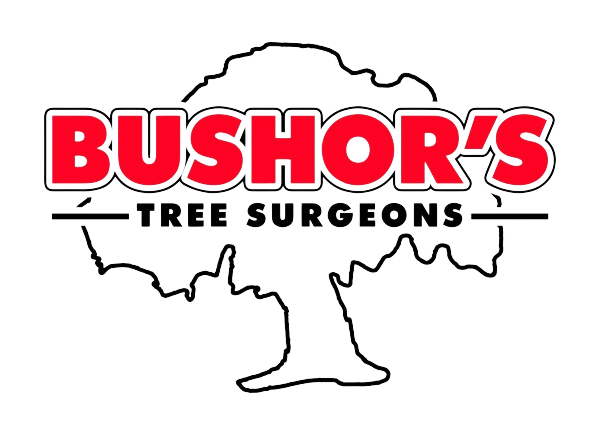Healthy trees are a vital part of any landscape. They add beauty, shade, and can even increase your property’s value. Unhealthy trees, on the other hand, do quite the opposite. Their damaged limbs and decaying trunks can pose as a threat to your home, loved ones, and assets. With this knowledge, you may be wondering — “How can I determine if my tree is unhealthy?”
Below, our staff at Bushor’s Tree Surgeons has provided a list of things you should look for to spot an unhealthy or damaged tree:
Splits or Cracks in Branches: Although most trees have slight cracks along their trunks and branches, deep splits can be a sign of something menacing. Throughout the year, inspect your tree’s trunk and larger branches for deep cracks. These splits can be a sign of structural weakness. During your inspection, also look for holes where the tree’s bark has broken off. This can also be a sign of structural weakness and can also act as entry points for harmful disease and fungi.
Decay: While it can be difficult to identify true tree decay, as it happens from the inside out, there are several outer signs to indicate possible decay. Peeling bark, a sudden appearance of carpenter ants, mushrooms around the base of the tree, as well as bracket fungi growing on the tree are a few of the most common signs of hidden decay. Unfortunately, tree decay cannot be cured and tree removal may be your best option.
Dead/Dying Limbs: Dead or dying limbs tend to stand out. Look for leafless branches during the spring or summer seasons, clinging dead leaves on a branch while others are bare, as well as a branch with an absence of bark. Dying/dead limbs are extremely brittle and can break very easily, which causes them to be extremely dangerous. Dying and dead branches should be removed immediately to prevent damage to your property, as well as the potential spread of disease. When these limbs are higher up in a tree, heavy, or out of reach, a Tree Care Specialist should be consulted.
Poor Tree Architecture: Notice your tree having an irregular growth pattern? Caused by poor pruning, severe weather, or abnormal growing conditions, poor tree architecture can indicate a weakness or a structural imbalance.
While there are many indicators to determine an unhealthy tree, it is in your tree’s best interest to consult with a Tree Care Specialist. A Tree Care Specialist has the experience and technology needed to provide you with a true diagnosis, as well as the next best steps you should take.
Looking for a Tree Care Specialist in Jacksonville, FL?
If you have any questions or concerns regarding your tree’s health, it may be time to contact a tree care specialist. At Bushor’s Tree Surgeons, our staff of Certified Arborists and Tree Care Specialists in Jacksonville, FL have decades of combined experience. Our team will arrive with the proper tools, equipment, and knowledge needed to evaluate your tree(s) health and determine if your tree can be treated or requires removal.
Bushor’s Tree Surgeons’ staff of Tree Care Specialists in Jacksonville, FL has been providing exceptional tree services in Jacksonville, Florida and St. Augustine, Florida for over fifty years. You can learn more about our full-service tree care company by visiting our ‘About Us’ page. Call us at 904-731-9100 or click our Tree Trimming Services in Jacksonville, Florida CONTACT PAGE to set up your consultation with our team of professionals. Our tree care services include, but are not limited to Tree Removal, Custom Blended Fertilizers, Tree Disease Diagnosis/Treatment, Cabling & Bracing, and Stump Removal.
